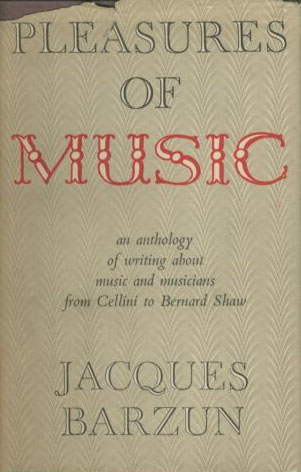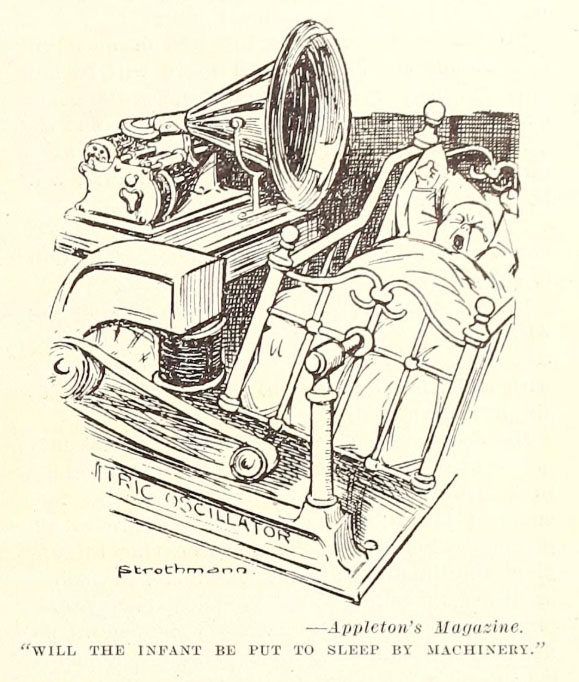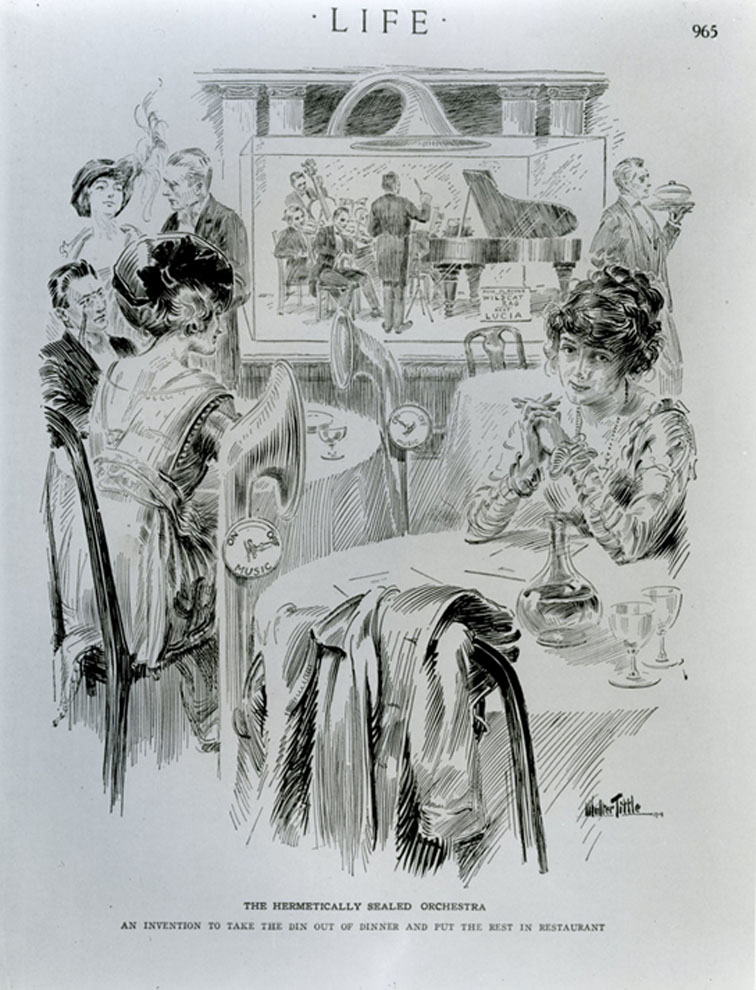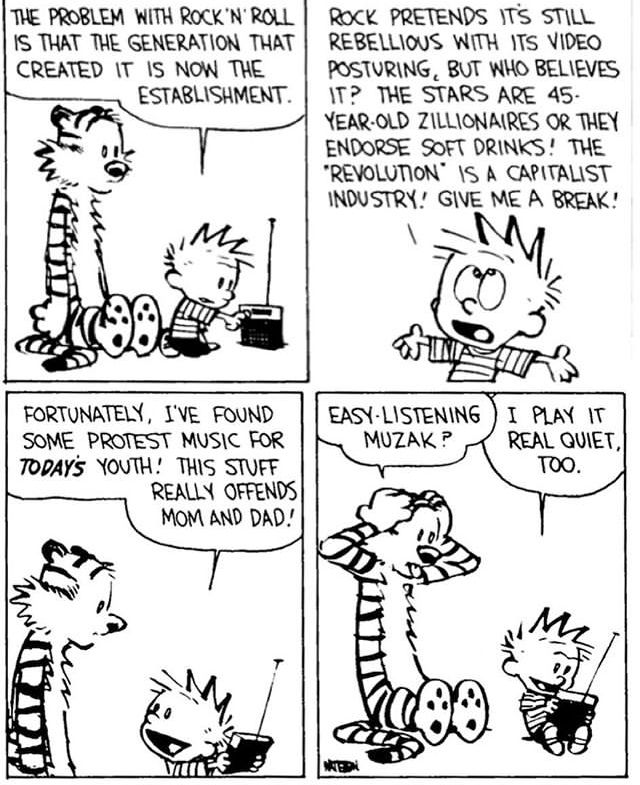
Pleasures of Music by Jacques Barzun,
Published by Michael Joseph, London 1952
"Music...is interwoven with the texture of our lives from morning till night. Music resounds for, with, and through everything; it is canned and broadcast, recorded and rebroadcast; it is, as to speak, piped into our houses at the very time when it has virtually ceased to be piped within them." pp.1-2
By Doug Boilesen 2018
Although the heart of Barzun's observation about music begins with how it had become unceasingly "interwoven" with "lives from morning till night," for Friends of the Phonograph it is his reference to "canned" music that resonates to the beginning of the phonograph's music making days with its cylinder wax records and some early disparaging comments by people of its time like O. Henry and John Philip Sousa.
The following, therefore, is not one of the typical books of the PhonoLiterature gallery where the book is telling a story that includes a phonograph. In this case Barzun's book will be used as a starting point to discuss canned music, Muzak and the pervasity of music in popular culture that continues into the 21st century.
O. Henry's 1903 McClure's magazine story "The Phonograph and the Graft" is one such example of music being called canned for popular consumption. In the story's plot of the graft devised by Henry Horsecollar, a phonograph is to be taken to South America to exploit the "Latins" who were unfamiliar with this machine but who Henry says are a people who yearn for "music and color and gaiety." According to Henry Horsecollar they would be easy targets for making some money. All they had to do was "export canned music to the Latins..."We'll be amassing wealth in the interior towns with our galvanized prima donna and correct imitations of Sousa's band excavating a march from a tin mine."
In John Philip Sousa's 1906 Appleton's Magazine article titled "The Menace of Mechanical Music" Sousa himself called the phonograph's music "canned music" and a danger to the future of music in America. "Sweeping across the country...comes now the mechanical device to sing for us a song or play for us a piano, in substitute for human skill, intelligence, and soul."
According to Sousa, the phonograph and its records were negatively impacting human learning and appreciation of music, and invading environments where it did not belong. "There was a time when the pine woods of the north were sacred to summer simplicity, when around the camp fire at night the stories were told and the songs were sung with a charm all their own. But even now the invasion of the north has begun, and the ingenious purveyor of canned music is urging the sportsman, on his way to the silent places with gun and rod, tent and canoe, to take with him some disks, cranks, and cogs to sing to him as he sits by the firelight, a thought as unhappy and incongruous as canned salmon by a trout brook."


Edison and others in the phonograph industry rejected Sousa's arguments against the phonograph including the disparaging "canned music" attribution. Over a decade later, when Edison was promoting his New Edison disc machine that "Re-Created" music, Edison's ads were still making it clear to consumers that their machine did not produce 'canned music'. "When you play an Edison, people don't say, "Canned music again."

As the phonograph continued to revolve its tunes and other music carrying technologies were introduced like the radio, more sounds and new places to hear music appeared. In 1934 "piped in" music introduced by a system named Muzak had so much success with its music in public buildings, including elevators, that the term "muzak" became the generic term for background music, a.k.a. "elevator music."

"An invention to take the din out of
dinner and put the rest in restaurant" - Life magazine May 1914
In the 21st century music had even more options for how and what could be heard. With streaming services like Spotify and iTunes music was interwoven, just as Barzun had observed in 1952, "with the texture of our lives from morning till night." WIth earbuds or in one's personal space music could be heard in retail stores and public places, indoors and outside, anytime and for as long, as loud or as soft as you wanted.

Calvin and Hobbes. Courtesy Bill Watterson 2014
"Music...is interwoven with the texture of our lives from morning till night. Music resounds for, with, and through everything."
And as The Whispers and later Sonny and Cher would sing, "And the Beat Goes On."